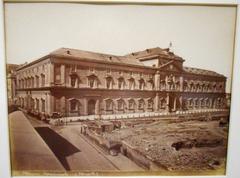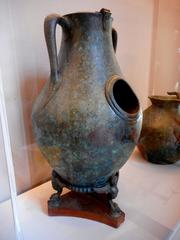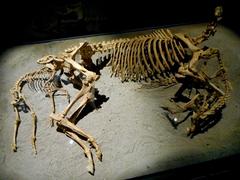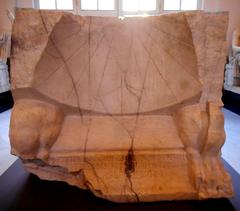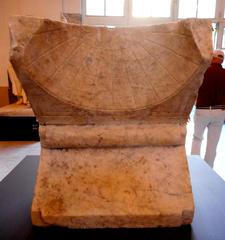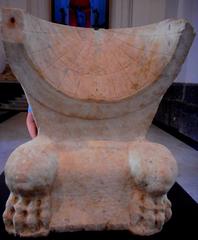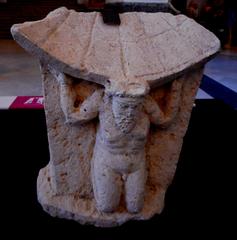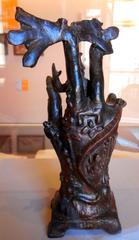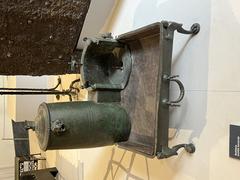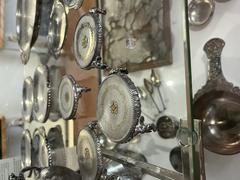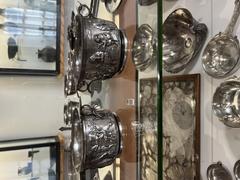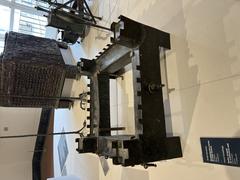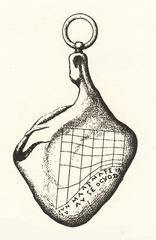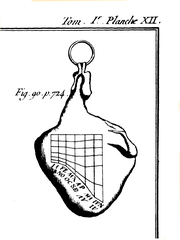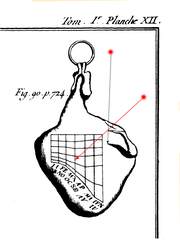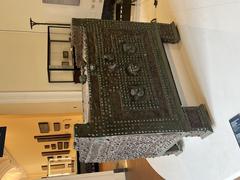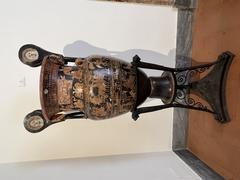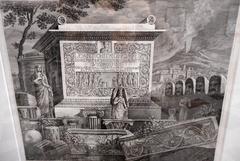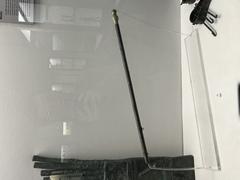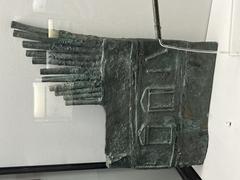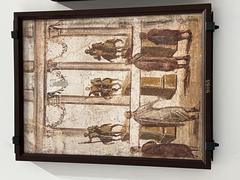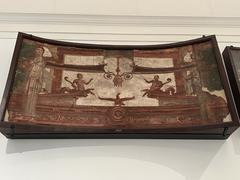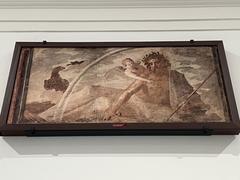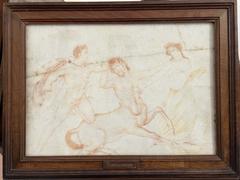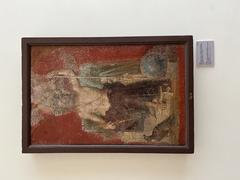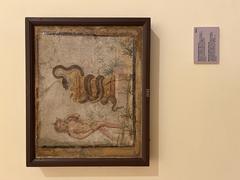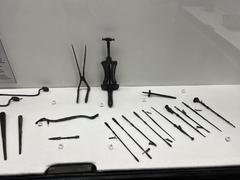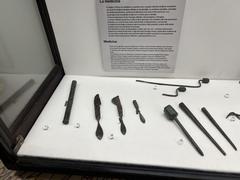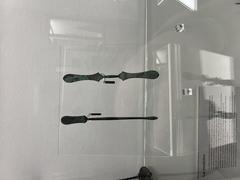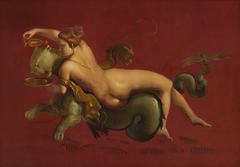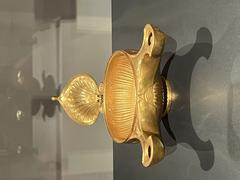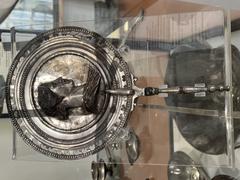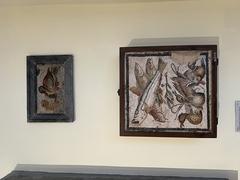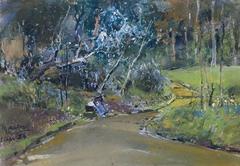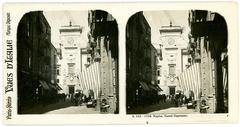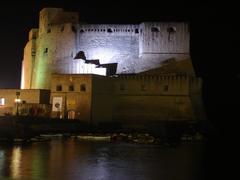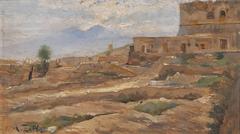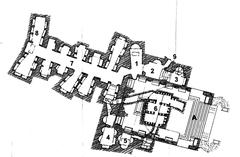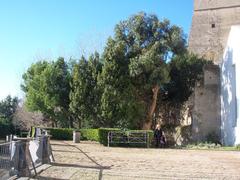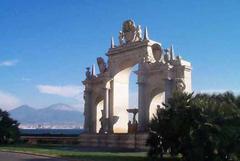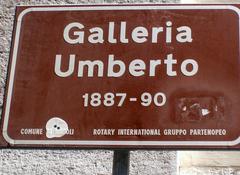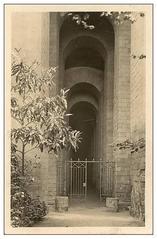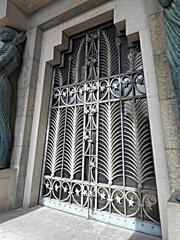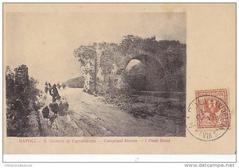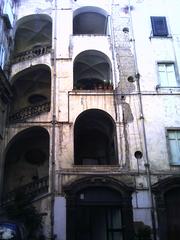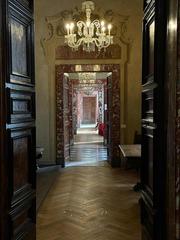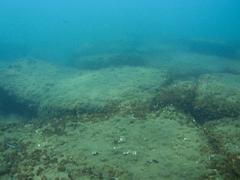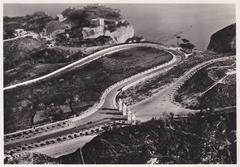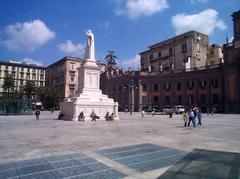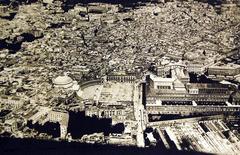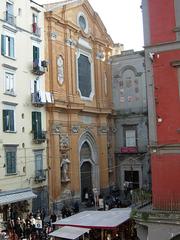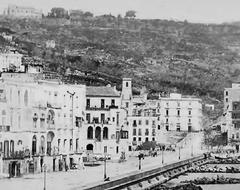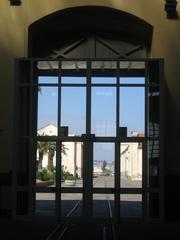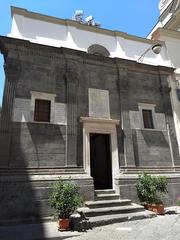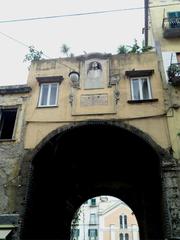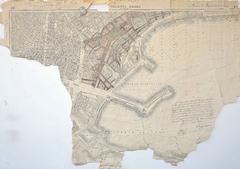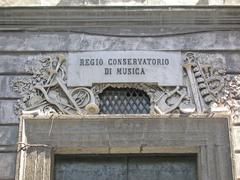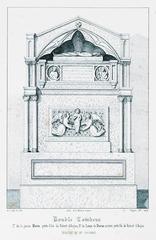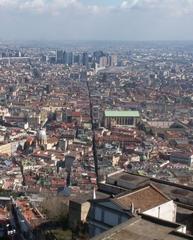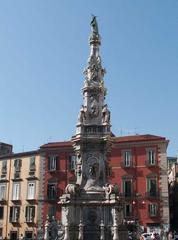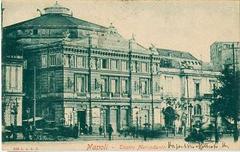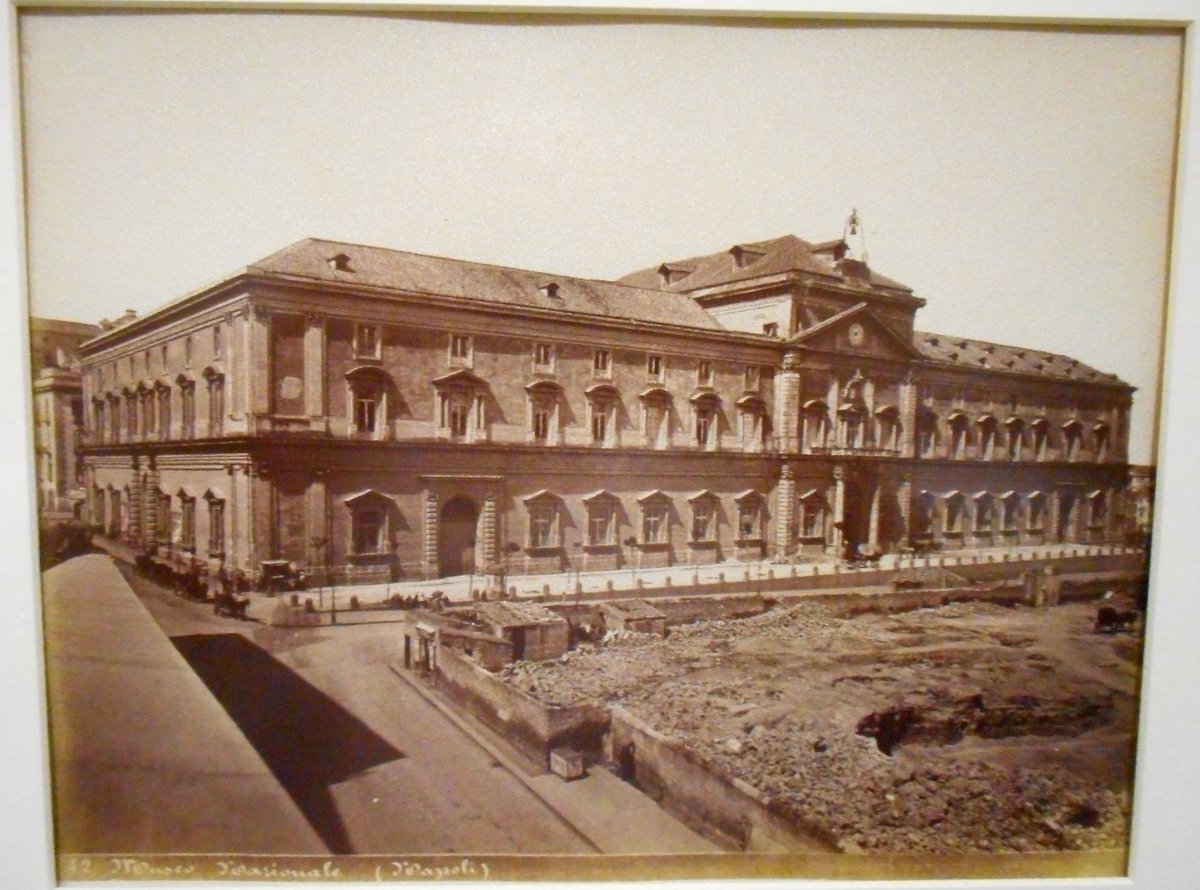
Naples National Archaeological Museum: Visiting Hours, Tickets, and Essential Guide to Naples Historical Sites
Date: 14/06/2025
Introduction
The Naples National Archaeological Museum (Museo Archeologico Nazionale di Napoli, MANN) stands among Italy’s greatest cultural institutions, recognized worldwide for its unparalleled collections of Greco-Roman artifacts, treasures from Pompeii and Herculaneum, and a vast Egyptian collection. Situated in the heart of Naples, the museum takes visitors on a remarkable journey through the ancient Mediterranean world, offering insight not only into extraordinary art but also into the daily lives, beliefs, and customs of past civilizations.
This comprehensive guide provides all the practical details needed for planning your visit—covering visiting hours, ticket options, accessibility, and travel tips—alongside an in-depth look at the museum’s history, key collections, and nearby historical attractions. Whether you are an archaeology enthusiast, a first-time visitor, or a family exploring together, the Naples National Archaeological Museum is a must-see destination and an ideal starting point for discovering the city’s rich heritage (Naples National Archaeological Museum FAQs; Introducing Naples; Comune di Napoli).
Table of Contents
- Origins and Historical Development
- Highlights of the Collections
- Museum’s Role in Archaeology and Conservation
- Visiting Hours, Tickets, and Visitor Tips
- Accessibility and Facilities
- Guided Tours, Audioguides, and Special Events
- Navigating the Museum: Layout and Etiquette
- Nearby Attractions & Travel Tips
- Frequently Asked Questions (FAQs)
- Resources and References
Origins and Historical Development
Originally constructed in the late 16th century as a cavalry barracks for the Spanish viceroys, the building that houses the Naples National Archaeological Museum was later repurposed as the University of Naples. Its transformation into a museum began in the 18th century under the Bourbon monarchy, particularly Charles III of Bourbon, who sought a grand institution to preserve royal collections and treasures unearthed from Pompeii and Herculaneum.
The museum’s official foundation dates to 1777, when the famed Farnese Collection was transferred from Rome. Over the centuries, MANN has expanded and modernized, earning its place as a global center for archaeological research and public education (Naples National Archaeological Museum FAQs).
Highlights of the Collections
The Farnese Collection
The museum’s crown jewel, the Farnese Collection, is one of the world’s most important assemblages of classical sculpture. Amassed by the influential Farnese family and brought to Naples in the 18th century, it includes masterpieces such as:
- Farnese Hercules: A colossal marble statue renowned for its muscular form and expressive detail.
- Farnese Bull (Toro Farnese): The largest single sculpture recovered from antiquity, depicting the myth of Dirce.
- Farnese Atlas: The oldest extant representation of the celestial sphere.
- Additional busts, reliefs, and Roman copies of Greek originals (Portanapoli; Through Eternity; Introducing Naples).
Suggested Visual: High-quality image of the Farnese Hercules with alt text “Farnese Hercules statue at Naples National Archaeological Museum.”
Pompeii and Herculaneum Artifacts
The museum is internationally renowned for its extensive collection of objects from Pompeii and Herculaneum, cities buried by Mount Vesuvius in 79 CE:
- Mosaics: The iconic Alexander Mosaic from the House of the Faun, composed of over 1.5 million tesserae, and numerous others depicting mythological and daily life scenes (Budget Your Trip).
- Frescoes: Vibrant, sophisticated wall paintings from villas, including the Villa of the Mysteries (The Geographical Cure).
- Bronze Statuary: Notable works such as the “Dancing Faun” and “Bronze Runners”.
- Domestic Artifacts: Coins, jewelry, glassware, and everyday items offering a direct connection to antiquity.
- Scale Model of Pompeii: A large-scale model helping visitors visualize the ancient city’s layout (Introducing Naples).
Suggested Visual: Photo of the Alexander Mosaic with alt text “Alexander Mosaic from Pompeii at Naples National Archaeological Museum.”
Egyptian and Epigraphic Collections
Ranking among Italy’s largest, the Egyptian collection features over 2,500 artifacts covering millennia:
- Sarcophagi and Mummies: Illustrating funerary practices and beliefs.
- Statues, Amulets, and Jewelry: Items from daily life and religious rituals.
- Borgia Collection: Enriching the museum’s Egyptian holdings (Portanapoli).
The Epigraphic Collection includes more than 10,000 inscriptions in Greek, Latin, and Oscan, offering a window into languages, laws, and customs of the ancient world.
Numismatic and Gem Collections
The museum’s numismatic collection holds over 200,000 coins and medals from ancient Greece and Rome, while the gem collection showcases intricately engraved stones and cameos.
Suggested Visual: Image of ancient coins and cameos.
Museum’s Role in Archaeology and Conservation
As a leading institution in archaeological scholarship, the museum has pioneered conservation and restoration methods, especially for fragile materials such as frescoes and mosaics. Its proximity to the Vesuvian sites has allowed it to function as a key research and preservation center, furthering global understanding of ancient Mediterranean civilizations (Naples National Archaeological Museum FAQs).
Visiting Hours, Tickets, and Visitor Tips
- Location: Piazza Museo, 19, 80135 Naples. Metro Line 1 (“Museo” station) or Line 2 (“Cavour” station) (Comune di Napoli).
- Visiting Hours: Open Tuesday to Sunday, 9:00 AM – 7:30 PM (last entry 6:30 PM). Closed Mondays, December 25th, and January 1st (Tickets Naples).
- Tickets: Standard admission €8–€22 (variations depend on exhibitions), reduced admission for ages 18–24, free for under 18s and over 65s (Comune di Napoli).
- Combo Tickets: Available for savings when visiting Pompeii, Herculaneum, or other sites (Tickets Naples).
- Artecard Napoli: City pass includes free or discounted museum entry and unlimited public transport (Lonely Planet).
- How to Buy: Online purchase is highly recommended for skip-the-line access (Tiqets).
- Best Times to Visit: Early mornings or late afternoons on weekdays; low season (November–March) is quieter.
Accessibility and Facilities
- Fully wheelchair accessible with elevators and ramps (Comune di Napoli).
- Restrooms on each floor.
- Cloakroom for bags and umbrellas.
- Gift shop and on-site café.
Guided Tours, Audioguides, and Special Events
- Guided Tours: Available in English and Italian, bookable online or at the ticket office (Tiqets).
- Audioguides: Available for rent in multiple languages (Veronika’s Adventure).
- Special Events: Temporary exhibitions, workshops, and evening openings; check the official website for current listings.
Navigating the Museum: Layout and Etiquette
- The museum is spread over several floors, with Pompeii and Herculaneum artifacts on the lower levels (NaplesPompeii.com).
- Free maps are available at the entrance; digital versions are on the museum website.
- Non-flash photography is permitted for personal use; professional equipment requires permission.
- Food, drink, and large bags are prohibited in exhibition areas; use the cloakroom.
- Touching exhibits is strictly forbidden.
Nearby Attractions & Travel Tips
- The museum is close to Naples’ UNESCO-listed historic center, the Royal Palace, Castel Nuovo, Cappella Sansevero, and Naples Cathedral (Comune di Napoli).
- Numerous cafés and restaurants are within walking distance.
- The Capodimonte Museum and San Martino Museum are excellent additional stops for art and history lovers.
Frequently Asked Questions (FAQs)
Q: What are the Naples National Archaeological Museum’s opening hours?
A: Tuesday–Sunday, 9:00 AM–7:30 PM; closed Mondays, December 25th, and January 1st.
Q: How much are tickets and where can I buy them?
A: Standard admission €8–€22; buy online for fast entry (Tickets Naples).
Q: Is the museum accessible for visitors with disabilities?
A: Yes, with elevators, ramps, and accessible restrooms.
Q: Are guided tours and audioguides available?
A: Yes, audioguides in multiple languages and guided tours can be reserved online or onsite.
Q: Is photography allowed?
A: Non-flash photography is permitted for personal use.
Q: What’s the best way to reach the museum?
A: Metro Line 1 (“Museo” stop), Line 2 (“Cavour” stop), or on foot from the historic center.
Resources and References
- Naples National Archaeological Museum FAQs
- Introducing Naples
- Comune di Napoli
- Portanapoli
- The Geographical Cure
- Veronika’s Adventure
- Tickets Naples
- Tiqets
- Lonely Planet
- NaplesPompeii.com
- Cultured Voyages
Final Tips and Summary
To make the most of your visit:
- Plan ahead and buy tickets online.
- Prioritize must-see sections: the Farnese Collection, Pompeii and Herculaneum artifacts, and Egyptian rooms.
- Allocate at least 2–3 hours.
- Take advantage of guided tours or audioguides for deeper understanding.
- Explore nearby historical sites in Naples for a richer cultural experience.
The Naples National Archaeological Museum is not just a repository of ancient art—it is a vibrant center of discovery, education, and inspiration. Download the Audiala app for audio guides and insider tips, and follow our social channels for the latest updates on Naples historical sites.
All sources referenced:
